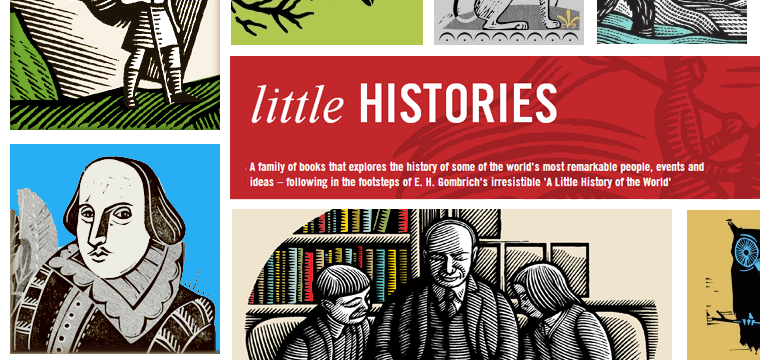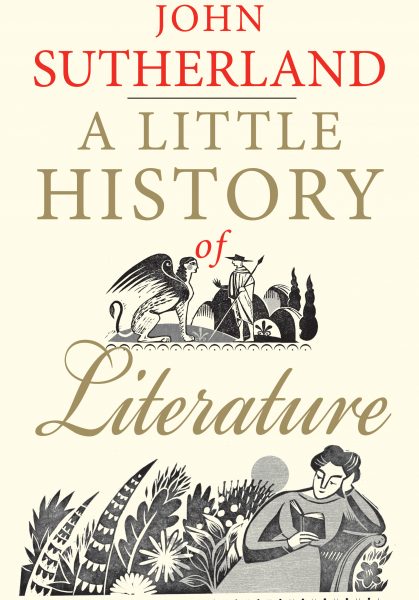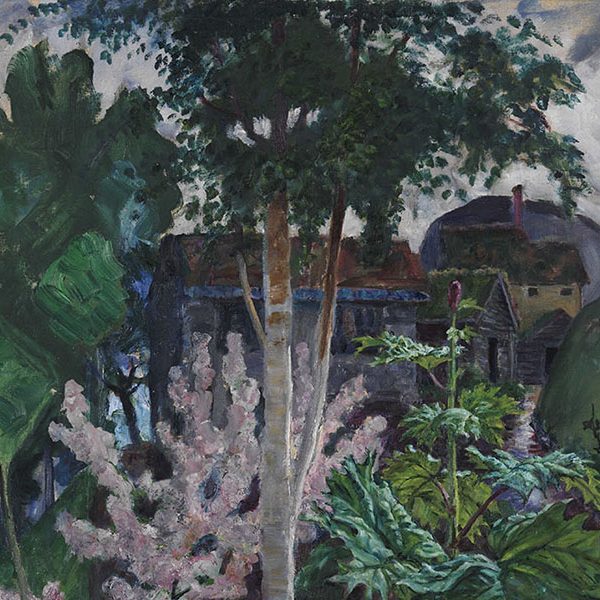To London, with Love: A Little History of Literature
Ivan Lett—
 What is the action a book nerd uses to signal his kin? Once it might have been a casual nod over horned-rim glasses; or, perhaps a deliberate and pretentious turn of the jacket, even the kindness to let a curious stranger read harmlessly over your shoulder. But in the digital age, when so many book recommendations are passed online, when both access to and displays of literature are transforming like never before in our history, sometimes you have to spew, to froth, to twitch, to seed the World Wide Web with your opinion, again and again, many times over to make a splash. I prefer to think of it as genuine honesty—a straightforward expression and timely devotion to a cause you believe in. And for the record, the book under discussion contains parts far more risqué than my own pale attempt at innuendo here.
What is the action a book nerd uses to signal his kin? Once it might have been a casual nod over horned-rim glasses; or, perhaps a deliberate and pretentious turn of the jacket, even the kindness to let a curious stranger read harmlessly over your shoulder. But in the digital age, when so many book recommendations are passed online, when both access to and displays of literature are transforming like never before in our history, sometimes you have to spew, to froth, to twitch, to seed the World Wide Web with your opinion, again and again, many times over to make a splash. I prefer to think of it as genuine honesty—a straightforward expression and timely devotion to a cause you believe in. And for the record, the book under discussion contains parts far more risqué than my own pale attempt at innuendo here.
 The newest addition to the Yale University Press London-originated series of Little Histories, based on E.H. Gombrich’s classic A Little History of the World, is John Sutherland’s A Little History of Literature. Last year, Yale University Press published the North American edition of Sutherland’s Lives of the Novelists: A History of Fiction in 294 Lives, based on Samuel Johnson’s 18th-century work Lives of the Poets. Now, one of our most popular series includes the literary excitement, playfulness, and irreplaceable guidance that Sutherland brings to the books he writes. In forty short chapters, he explores the history of Western literature from ancient Greece to publishing and copyright in the post-Gutenberg era; from how to read with Dr Johnson to the birth of children’s literature; censorship and racism and anti-Semitism in literature; and everywhere in between with iconic writers and thinkers like Shakespeare, Austen, Dickens, Kafka, Proust, Wilde, Freud, Larkin, Sartre, Morrison, Rushdie, &c. &c.
The newest addition to the Yale University Press London-originated series of Little Histories, based on E.H. Gombrich’s classic A Little History of the World, is John Sutherland’s A Little History of Literature. Last year, Yale University Press published the North American edition of Sutherland’s Lives of the Novelists: A History of Fiction in 294 Lives, based on Samuel Johnson’s 18th-century work Lives of the Poets. Now, one of our most popular series includes the literary excitement, playfulness, and irreplaceable guidance that Sutherland brings to the books he writes. In forty short chapters, he explores the history of Western literature from ancient Greece to publishing and copyright in the post-Gutenberg era; from how to read with Dr Johnson to the birth of children’s literature; censorship and racism and anti-Semitism in literature; and everywhere in between with iconic writers and thinkers like Shakespeare, Austen, Dickens, Kafka, Proust, Wilde, Freud, Larkin, Sartre, Morrison, Rushdie, &c. &c.
Working with the London office to publish the book globally, the collaborative reach of the campaign is much better suited to the “boundary-less” tools of web publishing. (More on this next Friday for University Press Week, November 10-16, on the Yale Press Log and many other social university presses in our blog sidebar.) In the coming weeks, we will be releasing several excerpts from A Little History of Literature here and on the Yale Books London blog, so that you may continue to follow our collective posting, tweeting, (spewing, frothing, twitching, seeding) and let everyone know about this wonderful book.
My column bias, as always, is for the Modernist literature of the early 20th-century, and I have selected a part of the chapter titled, “The Year that Changed Everything: 1922 and the Modernists”. (The next chapter, “A Literature of her Own”, begins with Virginia Woolf’s 1910 declaration of the change in human character, but I’ve rambled enough on that before.) I might even go so far as to compare the themes of exile and belonging to contemporary experiences of Internet identities and personalities, across geographic boundaries, where being “American” or “British” like T.S. Eliot in the example below, or any other categorical label, has more nuanced and complicated implications than their own face-values. But surely literature is not relevant to every facet of everyday life, is it?
As if I would concede anything less. Or as Sutherland puts it in the chapter “Off the Page: Literature on Film, TV, and the Stage”:
‘Literature’ as you will know, literally means something that comes to us in the form of letters. That is, something written or printed and taken in through the eye to be interpreted by the brain. But often enough, particularly nowadays, literature comes to us ‘mediated’, in different forms and through different channels and different sense organs.

John Sutherland
I want all erudite and philistine readers alike to go read this book; then, read it to your kids and teach them how to connect imagination with the real world and experiences of others: with literature. That’s how we learn and grow ourselves from one age to the next.
So John Sutherland writes on 1922:
Of all wonderful years in literature, 1922 qualifies as the most wonderful. It produced a bumper crop of books. But the reason for the year’s wonderfulness is not the quantity or variety of what was produced but the fact that what was published in that year (and the years on either side) changed the reading public’s sense of what literature could be. The ‘climate’, as the poet W.H. Auden later put it, was altered. A new and dominant ‘style’ came into play – ‘modernism’.
Historically one can trace modernism’s roots back to the 1890s and the ‘end of century’ (fin de siècle) decade covered in Chapter 21. Writers in that period, worldwide, seemed to have all bought into a kind of creative nonconformity, a breaking of ranks. Think of writers like Henrik Ibsen, Walt Whitman, George Bernard Shaw and Oscar Wilde. Writers, to put it at its simplest, came to see that their principal obligation was to literature itself – even if, like Wilde, it meant ending up in prison or, like Thomas Hardy, having their latest work burned by a bishop. Authority never had an easy time with modernism. It wasn’t listening. It was, as we say, doing its own thing.
If it began in the 1890s and swelled in the Edwardian (pre-war) period, it was in 1922 that this new literary wave crested. One can identify a number of forces and factors that were instrumental. The traumatic effect of the First World War had broken, forever, old ways of looking at the world. Nothing in 1918 seemed the same as it had in 1914. The war could be seen as a gigantic smash-up which left the field barren, but clear for new things to come along. It was what in Latin is called a tabula rasa: a blank slate.
What, then, were the works that can be said to have spearheaded the innovations of this great year, 1922? James Joyce’s novel Ulysses and T.S. Eliot’s poem The Waste Land, both published that year, are the first that come to mind. One could also add to these Virginia Woolf ’s Mrs Dalloway (the author’s most virtuosic exercise in the ‘stream of consciousness’ technique, more of which in Chapter 29). Woolf ’s novel was published in 1925, but conceived and set in 1922. Wilfred Owen’s wartime poems, published posthumously in 1920, and W.B. Yeats’s work, rewarded with the Nobel Prize in 1923, were accompaniments to the great year’s achievements. By general agreement the greatest Irish poet, Yeats developed strikingly during his long career, from a rhapsodiser about the so- called ‘Celtic Twilight’ (Ireland’s mythic past) to a modernist poet engaged with the present – not least the post-1916 civil disorder which was tearing his country apart. Some of his greatest work can be found in the collection Later Poems, published in 1922.
…
Exile and a sense of not belonging anywhere played its part. A large quantity of what we see as groundbreaking modernist literature was published by what the American writer Gertrude Stein (herself a notable modernist) called the ‘lost generation’ – writers without roots in any ‘home’ market. But modernism is something other than an ‘international’ literary movement. It is, more properly, what we could call ‘supranational’ – above and beyond any national origin. T.S. Eliot (1888–1965) was born, brought up and educated (at Harvard) as American as the Stars and Stripes itself. The manuscripts of The Waste Land reveal that early unpublished sections of the poem were set in Boston (near Harvard). Eliot was, in 1922, resident in Britain (he would later become a British citizen) although important parts of the poem were composed in Switzerland where he was recovering from a nervous breakdown. Is it a poem by an American, a Briton, or an American in Britain?
Ivan Lett is Online Marketing Manager for Yale University Press.
Book excerpt from “The Year that Changed Everything: 1922 and the Modernists” in A Little History of Literature, by John Sutherland. Copyright © 2013 by John Sutherland. All rights reserved.





